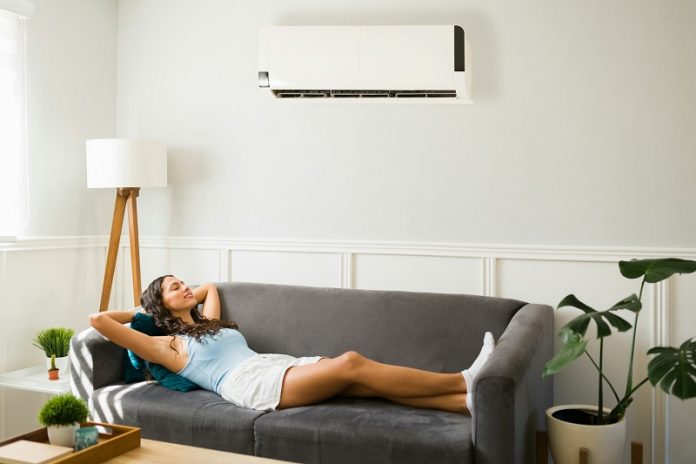
Ahh, summer, a time of vacations at the beach or mountains—and sky-high electricity bills as your air conditioner labors against the heat and humidity.
But what is the optimal temperature setting for your air conditioner?
And how does your body adapt to heat?
Northeastern University’s Stefan Kautsch, a teaching professor in physics, explains heat transfer and how the concepts he discusses in the classroom can also help humans survive sweltering temperatures.
This interview with Northeastern Global News has been condensed and edited.
Tell me how concepts of physics apply to air conditioners?
Heat (a form of energy) flows naturally from warm to cold. An air conditioner is that principle but reversed: Heat is moved from a cold area (inside) to a high-temperature area (outside).
But there are a few problems with this in a warming world.
Work is required to do this—meaning we need electricity to make that work and power the compressors.
But the more air conditioning we use, the more energy we need to use, and more energy means more power plants and—unfortunately—renewable energy is not that common here in the United States.
So the more we contribute to climate change, at the same time we try to protect ourselves from global warming.
What is the optimal temperature for an air conditioner to be set at so that it is most efficient?
It actually has to do a lot with body temperature, which is typically about 98 or 99 degrees Fahrenheit or 37 degrees Celsius, and that’s what the body needs to maintain to work properly.
But our body is not isolated. While our body constantly creates energy through metabolism, the excess energy is radiated through our skin to the outside world. When the air has the same temperature or is even hotter than the body’s temperature, that radiation transfer doesn’t work very well. It gets more and more inefficient.
So, it’s better from the physics perspective to be in an environment that’s a little bit lower than your body temperature—about 80 degrees Fahrenheit, because then the radiation transfer from the excess heat from the body can give away heat to an environment that’s a little bit cooler than it so this radiation transfer is effective.
That temperature sounds really high, especially given the arctic air pumped into many office buildings during the summer. What does this discrepancy mean for the body?
Your body experiences strong temperature differences between inside and outside and, in physics and engineering, we call that a temperature gradient. The body needs to equalize or to balance that—thus it needs to heat up or to cool down the body depending on the environment.
That is a lot of stress to the body. What happens is the body uses energy in order to heat up or cool down in order to balance your body temperature to the environment, and when you experience those big gradients, it needs a lot of energy that you can use for better things.
That’s why people in traditionally hot places drink hot water and tea, not ice water like here.
We talked about the efficiency of heat exchange, but what about the efficiency of air conditioners? Is it better to leave your air conditioner on—even if you’re not home—or crank it up when you return and actually feel it?
Well, it depends on your building and its insulation.
If you let the unit run all the time, and the building is poorly insulated, you would just waste all the cool air, which escapes outside immediately. So, then the best thing is to use it when you are home and when you need it.
If you live in a building that is nicely insulated, then you can set the thermostat and let the air conditioner run only once in a while when it hits a set temperature. Then you can let it run through the day—at 78 or 80 degrees Fahrenheit.
So, say you rent an old, drafty apartment and have only a window unit and fans. Is there anything else you can do to beat the heat?
Natural airflow (if you can stand the temperature) is always good by opening windows on opposite sides of an apartment. You can also close windows with curtains or with blinds so that the direct sunlight doesn’t hit inside and you create a shadow.
Because if the sun hits a surface, the surface warms up due to the solar energy, so you want to keep the sunlight outside. That also has to do with colors—bright colors like white are better for reflection and reflecting the sunlight; but dark colors get warm more easily and faster because they absorb the sunlight.
Written by Cyrus Moulton, Northeastern University.



